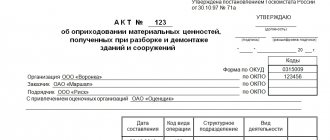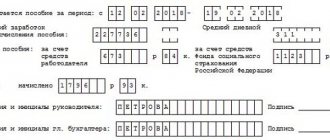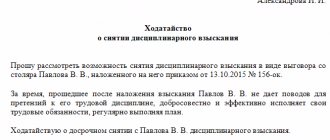Form
As a rule, developing a template for drawing up such a document is the responsibility of the employer himself.
Although the law allows you to draw up an act in a free style. All the important details are displayed here:
- Actions that need explanation;
- the very fact of refusal to give any explanation is indicated.
Naturally, the act must contain information about the company and its director. Information about the employee in respect of whom the report is being drawn up is also indicated. The members of the commission are also listed here. You can often encounter a situation where an employee does not want to sign the drafted document. This also needs to be shown in the document. In addition, you can additionally draw up a new act related to the employee’s refusal to sign the original act.
The role of explanatory
As you might guess, with any unusual behavior of his subordinate, the manager wants to receive intelligible explanations.
Often, an employee does not wait for the director’s request, but independently wants to explain why he did what he did. After reviewing the explanations provided by the employee, the manager determines how guilty the employee is and chooses a punishment for him. But you can often encounter a situation where there are good reasons for certain actions. For example, these could be unexpected illnesses or circumstances that the employee could not influence. As a rule, the employee attaches documents confirming the reason to the explanatory note. In such situations, the director cannot take disciplinary action.
( Video : “How to write correctly and submit an explanatory note to your boss.”)
The role of explanatory
It is difficult to overestimate the importance of an explanatory statement - it helps the management of an enterprise understand the motives for committing an offense and determine the degree of guilt of the offender.
And although the presence of an explanatory note on the part of the employee does not oblige the employer to release him from punishment, in some cases, if the reason for committing the offense was sufficiently compelling and respectful (for example, the illness of a close relative, force majeure, etc.) and to the explanatory note supporting documents are attached, the manager does not have the right to impose disciplinary sanctions .
In what cases can an act be drawn up?
There are certain circumstances in which a quitclaim deed is mandatory. For example, an employee refused to perform direct duties. Failure to perform work properly may result in disciplinary action. This is a reprimand, reprimand, dismissal. However, before applying punishment, the manager must fully understand the current situation. This is precisely why an explanatory note is needed.
Here you need to understand that presenting a written explanation is in the interests of the employee himself. If he refuses, it could only make the situation worse. After all, regardless of whether the employee explained the reason for his actions or refused to talk about it, disciplinary action cannot be avoided.
If the employee’s incorrect actions led to the employer receiving certain damage. Most likely, in this case, a decision will be made to compensate the employee for damages. The main stage of investigating what happened is to determine the reasons that led to the occurrence of this situation. But for this you will need to obtain written explanations from the culprit. It is possible that the facts stated in them will become a mitigating factor.
Why is the act needed?
Everything here is extremely simple; with the help of an act, the manager receives documentary evidence that the employee actually committed a bad act.
In addition, with the help of this document you can understand whether the employee repents of his crime or does not consider himself guilty. Based on the information specified in the explanatory note, a decision is made on the degree of punishment. For example, this could be a simple remark, or even a reprimand. The possibility of dismissal of an employee under this article cannot be ruled out. With normal relations between employee and employer, no problems arise. Usually, at the first request, the employee gives written explanations of his actions. But there are situations in which things are different. For example, the guilty employee does not make contact at all, and naturally does not want to give an explanation. He may not even sign the waiver. In this case, the employer is recommended to read the drafted act out loud in front of witnesses. If the case goes to trial, the employer will be able to prove that the employee was familiar with the document.
( Video : “7 questions for a lawyer. Explanatory note if you are late for work”)
Who composes?
As a rule, the responsibility to draw up this document falls on the shoulders of the immediate supervisor of the employee who committed the violation.
This could be the head of a department, the head of a structural unit. In order for the act to be considered a legally significant document, other employees must take part in its execution. Essentially, these are the commission members who are involved in this process from beginning to end. The commission must consist of at least three people. The head is appointed as the chairman. Since the law does not regulate the process of drawing up this document, the members of the commission are appointed exclusively by the head. This could be a secretary, a lawyer, ordinary workers. As for the specific hand that will directly fill out the act, there is no fundamental difference. Both the chairman of the commission and any of its participants can enter information into the document.
Typically, the internal rules of the organization determine in what period after the request the employee must provide an explanatory note. But this period should not exceed one month. As for drawing up the act, this procedure can be started three days after the refusal.
Act on failure to provide a written explanation by the employee
How to draw up an act Both the information part of the act and its execution are not subject to any special requirements: the document can be printed on a computer or written by hand, on a simple blank sheet or on company letterhead. It is important to comply with only one condition: the act must be signed by the direct compiler, as well as by the members of the commission who were present at its creation. It is advisable to obtain the autograph of the offending employee, and if he refuses, an appropriate note should be made in the document.
It is not necessary to certify a document with a seal, since since 2020 legal entities have been exempted by law from the requirement to use stamps in their activities. It is enough to draw up the act in a single copy, but if necessary, you can make the required number of copies.
How to draw up an act of refusal to write an explanatory note in 2020
When drawing up an act, there is no need to adhere to any strict requirements.
To enter information, you can choose handwritten or computerized options. The main thing you should pay attention to is the correct entry of all important information relating to a specific action. Typically, companies develop letterheads for these purposes, which are much easier to fill out. Usually the document is drawn up in a single copy. This is quite enough for the manager to fully understand what happened. Although there are situations when an enterprise has several managers, each of whom wants to receive a copy of the act. In this case, you can make the required number of copies. When drawing up the act, it is recommended to adhere to the rules for drawing up documents of this kind:
- In the “header” you must indicate the name of the organization and the name of the document itself. The city and date of registration are also indicated here.
- The main part lists the names and positions of all commission members. It is indicated in respect of which employee the act is being drawn up. It is noted what exactly the accused did and what consequences this led to. It is also necessary to note the very fact that the employee refuses to draw up an explanatory note. On the part of the accused employee, it would be useful to indicate exactly why he does not want to give explanations for his actions.
- At the final stage, each of the commission participants must sign their autograph. Signatures are affixed “live”. It is advisable that the employee in respect of whom the act is drawn up also signs here. This will be proof that he is familiar with the information provided here. Although without this signature the document will still be considered valid.
Sample act of refusal to write an explanatory note
Necessity and essence of explanation
The imposition of disciplinary measures for established violations of labor discipline and improper performance of official duties (Article 192 of the Labor Code of the Russian Federation) includes an algorithm for the recording procedure, according to which the following is carried out step by step:
- establishing the fact of an identified offense and reporting the offense to management by drawing up a document by a specially created commission or submitting a report to the head of the relevant department;
- a proposal to write an explanation to the offending citizen in any form, indicating the reasons for the offense and drawing up an act of refusal to write an explanatory note if the proposal is rejected;
- studying documentation by management and making a decision by issuing an order using a standard or independently developed form;
- familiarization with the employee's order against signature within 3 working days and similar preparation of the document if you do not want to sign the order.
A decision to impose an administrative penalty cannot be made without requiring a written explanation of what the culprit did and a presentation of the events “from his own point of view,” for which Article 193 of the Labor Code of the Russian Federation allows two working days. If an employee refuses to write an explanatory note, then the fact does not exempt from punishment, but requires the drawing up of an act of refusal to give an explanation.
In case of non-compliance with the regulations, the procedure for applying disciplinary sanctions is considered to be carried out in violation of legal norms. If the sanction was dismissal for negative reasons (Article 81 of the Labor Code of the Russian Federation), then the termination of the employment contract is considered unlawful with the possible reinstatement of the employee in his position and the imposition of financial sanctions on the business entity and the calculation of wages for the period of forced downtime.
Act on the employee’s failure to provide a written explanation sample form
Info
How to draw up an act Both the information part of the act and its execution are not subject to any special requirements: the document can be printed on a computer or written by hand, on a simple blank sheet or on company letterhead. It is important to comply with only one condition: the act must be signed by the direct compiler, as well as by the members of the commission who were present at its creation. It is advisable to obtain the autograph of the offending employee, and if he refuses, an appropriate note should be made in the document.
It is not necessary to certify a document with a seal, since since 2016 legal entities have been exempted by law from the requirement to use stamps in their activities. It is enough to draw up the act in a single copy, but if necessary, you can make the required number of copies.
Why is an explanatory note needed?
To prove the fact of non-compliance with the terms of an employment contract, there is such a thing in law as an “explanatory note”. In it, the employee indicates the reasons for his misconduct. However, not every delay, for example, is due to carelessness. There are also objective reasons, such as illness or force majeure. In order to prevent the punishment of innocent people, groundless accusations of employees and the imposition of several penalties for the same offense, all facts are documented.
An explanatory note is drawn up at the request of the manager. The reason could be any violation of the law - from being five minutes late to missing work. However, as practice shows, mostly explanatory notes are drawn up based on serious work flaws. It becomes his documentary confirmation and a kind of sincere recognition of the employee. If it exists, the manager has every right to impose disciplinary punishment on the employee. In order not to receive a discreditable entry in their personal file, many employees refuse to draw up an explanatory note. This fact is also recorded, but by a different document - an act.











